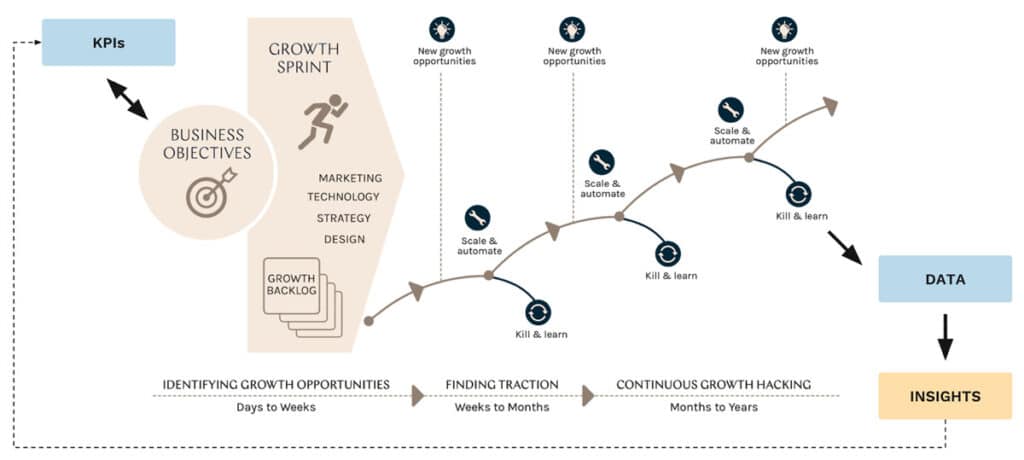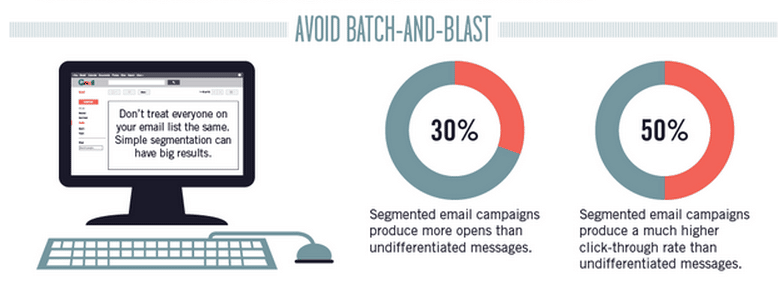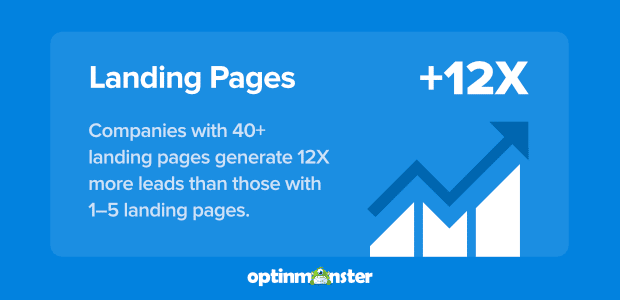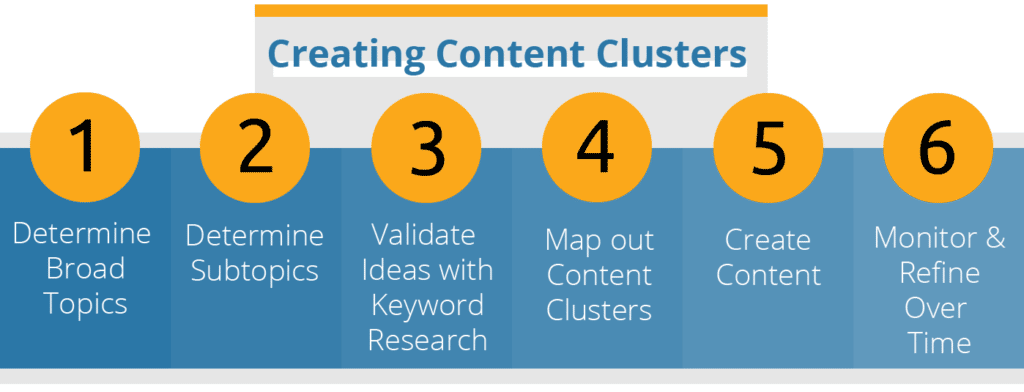Developing a successful marketing strategy and roadmap that will foster revenue growth is top of mind for businesses of any size. With all of the different tactics that can be employed, bandwidth can feel limited and even stifling. However, it doesn’t have to feel this way.
Rather than making sure you’re implementing as many things as possible, it’s even more important to hone in your focus on tactics that you believe will make a greater impact on your business.
In today’s blog post, I will focus on the following:
- How to lay out a clear growth hacking strategy
- How to determine which growth tactics you should employ
- Identifying KPIs and metrics that will measure your progress
- How to make sure you’re set up for success as you move forward
Before we dive in, I always love highlighting specific stats around the topics I write because they provide a sense of validity and perspective as to why growth hacking even matters:
- Using visual content like videos on landing pages can improve conversions by 86%.
- On average, for every $92 spent on acquiring a customer, just $1 is then spent on trying to convert them.
- 74% of conversion rate optimization programs increase sales.
- 71% of companies run two or more A/B tests a month.
- A 1-second delay in your site speed can reduce conversions by up to 7%.
Developing a Growth Hacking Strategy

When it comes to creating a growth hacking strategy, I don’t think of it as something that’s vastly different from your overall marketing roadmap. In fact, the two should be integral. More importantly, ensure that you are aligning your growth hacking initiatives with your business goals. Here’s an example I provided from a previous blog post:
The key is to connect your business goals with your marketing goals. Here are examples of business goals:
- Increase revenue
- Build your brand’s authority
- Reach more prospects
- Grow profits
To tie into these business objectives, here are marketing goals you can add to your road map:
- Gain more email subscribers
- Increase the number of visitors to your website
- Gain more social shares and followers
- Grow the number of click-throughs for your paid ads
Remember, set a time limit for each of these goals. For instance, if your marketing goal is to grow your email subscription to 500 emails, set a date for when you want to achieve it. A goal statement should follow this formula: (goal) plus (number) plus (date). It can look something like this: “Grow my email list to 500 in three months.”
Determining Your Growth Hacking Tactics
As you begin laying out your tactics, it’s important that you narrow down to 3-5 tactics and then break them down into the types of testing you will employ. Here’s an idea of what that would look like:
Email marketing
Did you know that segmenting your email lists can result in a 760% increase in revenue? This really boils down to understanding ‘who’ is in your database, what drove them to join your email list, and how you can further personalize their experience with you. More specifically, here are stats you can’t deny when it comes to tying in personalization with your email marketing efforts:
- Personalized emails deliver six times higher transaction rates.
- Some companies have recorded an 8x improvement on click-through rates with a personalized video versus standard outbound email campaigns.
- 50% of companies think that an increase in personalization can improve email interaction among subscribers.
- Personalized emails deliver 6x higher transactional rates.
- Segmented, targeted, and personalized emails generate 58% of all revenue.
- Personalized email marketing generates a median ROI of 122%.

What does all of this tell you?
Email shouldn’t be ignored and should be used thoughtfully to meet your existing and potential customers wherever they are within your funnel. Vanity metrics such as open rates and click-through rates are great, but if you can’t measure ROI, then you’re not going to be able to see how email helps move the needle.
Here are some quick email growth hacking ideas you can implement:
- Automation, tied in with lead scoring.
- Test out different subject lines.
- Test out different CTAs.
- Try out different offers from content, trials, discounts, etc.
- Test out images and visuals such as memes and gifs.
- Figure out which days and send times work best.
Services like Ontraport can really help with your email marketing efforts by helping you personalize and segment your mailing list and then analyze the results.
Landing page optimization
What I love about landing pages is that you have the ability to build out as many as you’d like (of course, while ensuring they are targeted and relevant to campaigns you are running), test design elements and messaging with flexibility, and you can quickly see what triggers people to engage.

The importance that landing pages play when it comes to understanding the following is key for success:
- What type of messaging works best?
- Which creative elements drive the most conversions?
- How many touch points take place before a conversion happens?
- Where in the funnel stage (e.g. TOFU, MOFU, BOFU) do most people fall into with each of your landing pages?
- What type of offer works better? (e.g. content download vs. direct inquiry)
If you are new to landing pages — or even if you’re an old pro — using a tool like Kinsta can really help you develop user-friendly landing pages and track their effectiveness.
Content and SEO
In everything that you do, content is at the heart of it all. It is what ties every single implementation together and also can provide you deeper insights into what your target audience wants. More specifically, having a clear content strategy is going to help you drive demand, generate leads, and convert sales.
One of the most effective ways you can ensure that your content marketing efforts and SEO play well together is to develop clusters. As I’ve mentioned before in a previous post:
A content cluster is subtopics that relate to one another and also relate to one overarching idea to create a content pillar that search engines view as authoritative and comprehensive.
This is where SEO makes its way back to your content strategy. However, instead of searching for keywords that relate to a single article, search for keywords that relate to an entire content pillar. Then turn these keywords in content that can be clustered under your content pillar.

An example to consider would be keywords that relate to the content pillar. A “How to Stay Motivated While Working Out at Home” content pillar would include “workout plans” and “reward systems.” These two keywords can be turned into sub-topics such as “A Workout Plan to Help You Stay on Track” and “Our 3-Step Reward System to Help Keep You Motivated While Working Out at Home.”
Further, consider exploring topics that Google suggests when you type in a content pillar. For example, when I type in “how to stay motivated while working out at home,” topics such as “how do I stay motivated to eat healthily” also come up. This is a concept that can be included with the content pillar “how to stay motivated to workout at home.” Also check out tools like SEMRush to help you find topics that are trending in your industry.
Advertising
Nothing moves faster when it comes to giving you clear feedback like publishing ads and seeing which ones actually drive the best results for you. Similar to your landing pages, ads will help you quickly see which type of messaging and creative elements your target audience gravitates towards, and which provoke them to take the action you want them to.
Moreover, there is a lot to think about when it comes to setting up a digital advertising plan that is going to yield strong results and a positive ROI. Before you start to spend any marketing dollars, you need to figure out the following:
- What is your positioning?
- What type of messaging are you going to test?
- Who is your target audience?
- Which ad platforms will you advertise on?
- What’s your budget?
- What are your projected results?
Quick tip: Check out my previous blog post on How to Build Out Your Advertising Plan to get you started.
KPIs and Metrics to Track

I’ve written a ton around KPIs and metrics that businesses should be tracking to get an idea of what’s working, what isn’t working, and where improvements are needed. That said, here are some quick snippets from a previous blog post:
- Customer Acquisition Cost (or CAC) is the sum of all of your marketing spend, salaries, commissions, bonuses, and overhead in a given time frame. This total is divided by the number of new customers that you earn within that same time frame.
- Customer revenue is the amount of money a customer brings to your business in a given time frame (usually on a monthly or annual basis). Investors don’t just want to see the number of new customers, but rather how much they’re contributing to the bottom line.
- Repeat customers build value over time. The longer they remain with your service or the more they buy from you, the greater their customer lifetime value. To calculate this metric, take their average purchase value and multiply that number by their average purchase frequency. Then, multiply that amount by the average customer lifespan. Here’s how this looks: The average customer purchases your $99 subscription service and retains your service for an average of 5 years. In this case, your total customer lifetime value is $5,940 (the amount of money they spend with your company over the course of their lifespan).
- Overall ROI. You can calculate ROI by taking your Sales Growth, subtracting your total cost of advertising, and then divide by your total cost of advertising. Only 21% of B2B companies claim to be successful at measuring the ROI from their content marketing. This is the type of number you want to check each month so you can measure your progress and the overall effectiveness of your combined marketing efforts. Ideally, as your organic traffic and social media traffic increases, your ROI will increase, even if you maintain the same advertising budget.
Wrapping It Up and Moving Forward
Every touchpoint matters and within each involves personalized (to even hyper-personalized) content that shows the problem you’re solving, why you’re the best solution in the market, and how you’re going to make your target audiences’ lives better.
The great thing with adopting growth hacking methodologies is that you go into every implementation with a strong approach to test and isolate variables as much as you can. All of this will then provide you with data points that can help you make better decisions that will ultimately drive revenue for your business.
Disclosure: Please note that some of the links above are affiliate links. I only recommend products and services that I use and stand behind, and if you decide to try them, I will earn a commission at no cost to you. Doing so helps me run this blog and provide free content for you, my readers.






One Response